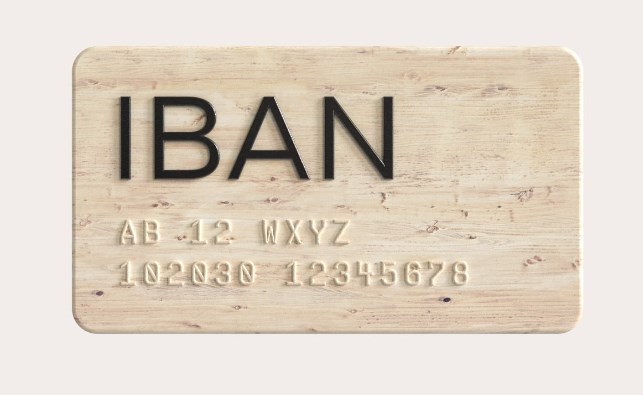In the complex landscape of international finance, the International Bank Account Number (IBAN) serves as a foundational element, ensuring the smooth and secure processing of cross-border transactions. This standardized system not only streamlines banking operations across different nations but also significantly reduces the risk of errors, making global trade more accessible and efficient. In this article, we delve into the intricacies of IBAN, exploring its structure, importance, and the pivotal role it plays in the modern financial ecosystem.
Contents
Understanding IBANs: The Backbone of International Banking
Introduction to International Bank Account Numbers (IBAN)
In the intricate world of global finance, the International Bank Account Number (IBAN) stands as a critical component in the facilitation of international money transfers. Designed to streamline transactions across national borders, the IBAN plays a pivotal role in reducing errors and speeding up the banking processes.
What is an IBAN?
The IBAN was first adopted by the European Committee for Banking Standards (ECBS) and later became an international standard under ISO 13616-1:2007. It helps in identifying an individual account, the bank owning this account, and is instrumental in ensuring that transactions are swift and secure.

The Structure of an IBAN
An IBAN consists of up to 34 alphanumeric characters, comprising a country code, two check digits, and a long and detailed series of additional digits which represent the bank and the account number. For instance, a UK IBAN might look something like this: GB29 NWBK 6016 1331 9268 19. Here, ‘GB’ stands for the country code of the UK, ’29’ is the check digits, and the rest is the bank’s own detailing.
The Importance of IBAN in International Trade
In the realm of international trade, the use of IBAN allows for quicker validation of bank details. This not only minimizes the risk of transaction errors but also enhances the efficiency of cross-border payments.
How IBAN Enhances Banking Security
Preventing Errors in Transactions
The standardized structure of the IBAN minimizes the risk of transcription errors. It incorporates check digits which are calculated using a mod-97 operation, providing a mathematical validation of the bank account number which significantly reduces the chances of errors during the transaction process.
Facilitating Faster Transactions
By standardizing the format for bank account identification across countries, the IBAN improves the speed of processing international payments. This is because the international banking system is better equipped to recognize and verify the details quickly and accurately.
The Implementation of IBAN Worldwide
Adoption Across Different Countries
As of today, over 70 countries have adopted the IBAN standard for their banking systems. This widespread adoption underscores the effectiveness of IBAN in enhancing transaction efficiency and security globally.
Challenges in Global IBAN Implementation
Despite its benefits, the implementation of IBAN is not without challenges. These include the integration into existing banking systems, educating customers about IBAN, and the ongoing need to update systems in line with international standards.
The Future of IBAN
Innovations in Banking with IBAN
With the ongoing advancements in financial technology, the role of IBAN is likely to evolve. Innovations such as blockchain and AI could integrate with IBAN to further enhance the security and efficiency of international transactions.
The Role of IBAN in Financial Inclusion
IBAN also plays a crucial role in financial inclusion, providing a gateway for unbanked populations to participate in the global economy. By simplifying the process of cross-border transactions, IBAN makes it easier for people in developing countries to engage in international trade and access financial services.
Conclusion
The International Bank Account Number (IBAN) is more than just a series of digits. It is a fundamental tool in the global financial infrastructure, facilitating secure and efficient international transactions. As the world becomes increasingly interconnected, the importance of a system like IBAN can only be expected to grow.
FAQs After the Conclusion
- What does IBAN stand for?
- IBAN stands for International Bank Account Number.
- Is IBAN used worldwide?
- IBAN is used by over 70 countries around the world but is not universal.
- How is an IBAN structured?
- An IBAN is composed of a country code, check digits, and a bank and account number.
- Why is IBAN important in international banking?
- It reduces errors and facilitates faster and more secure cross-border transactions.
- Can IBAN be used for domestic transactions?
- In some countries, IBAN can also be used for domestic transactions alongside international ones.

